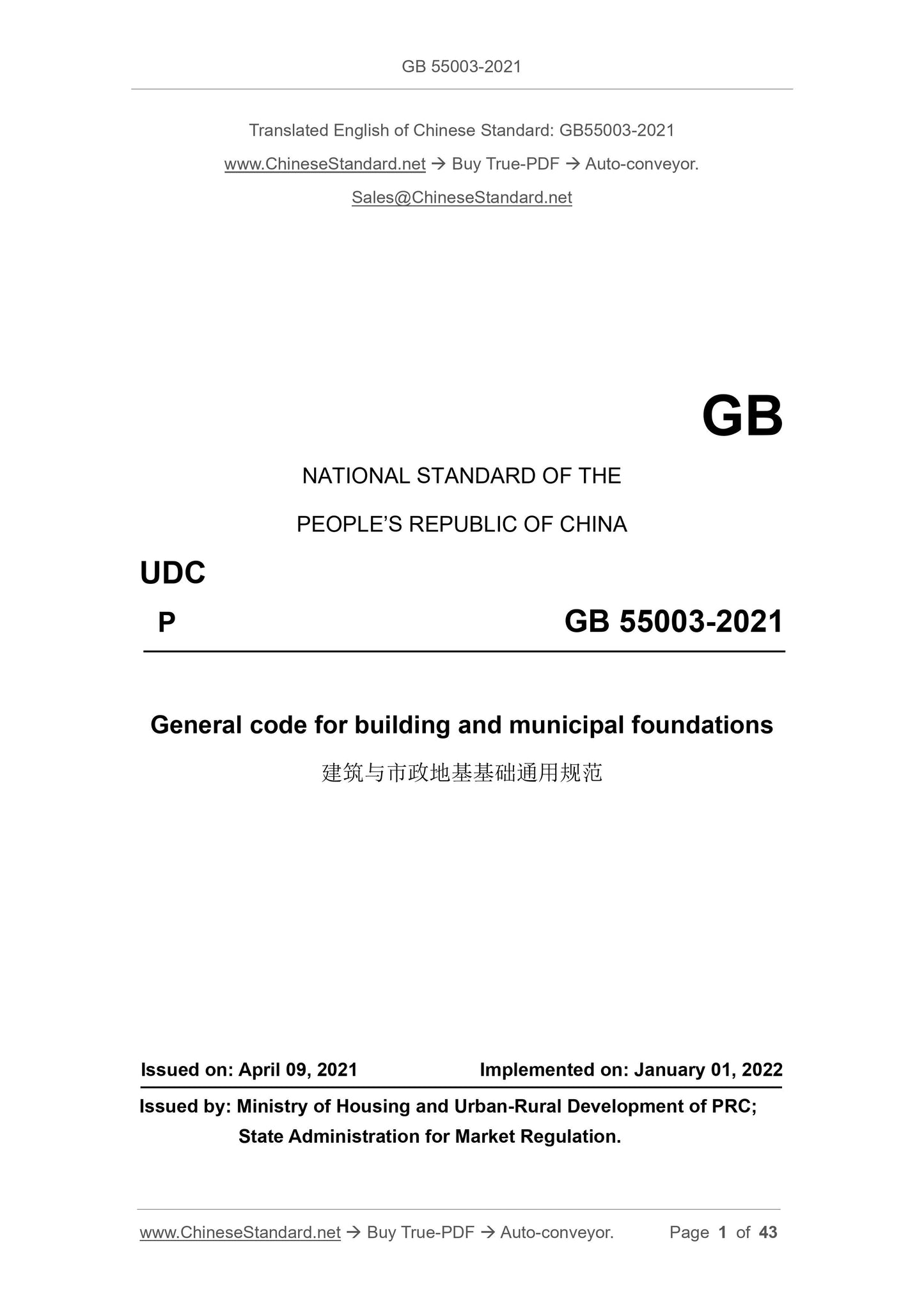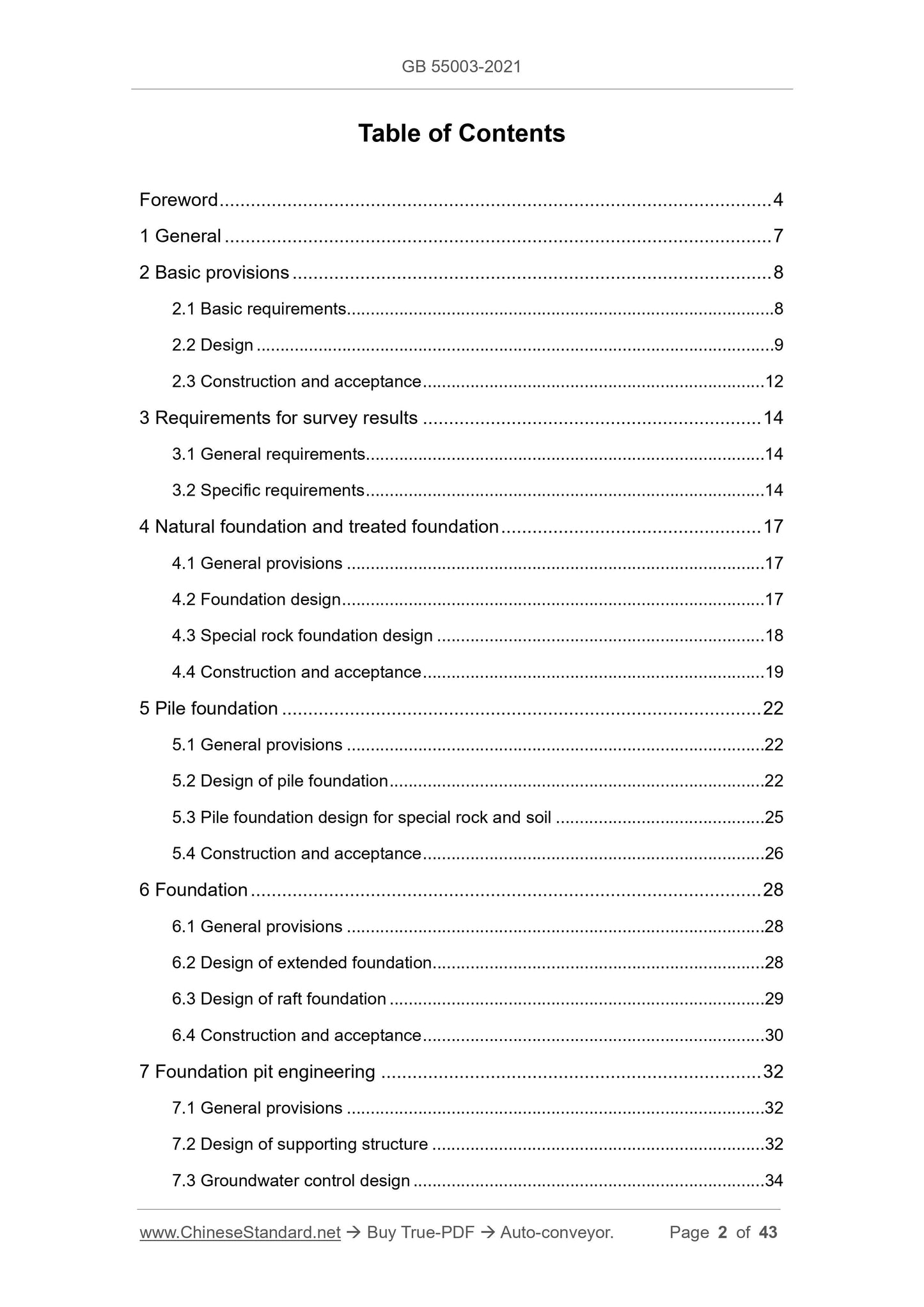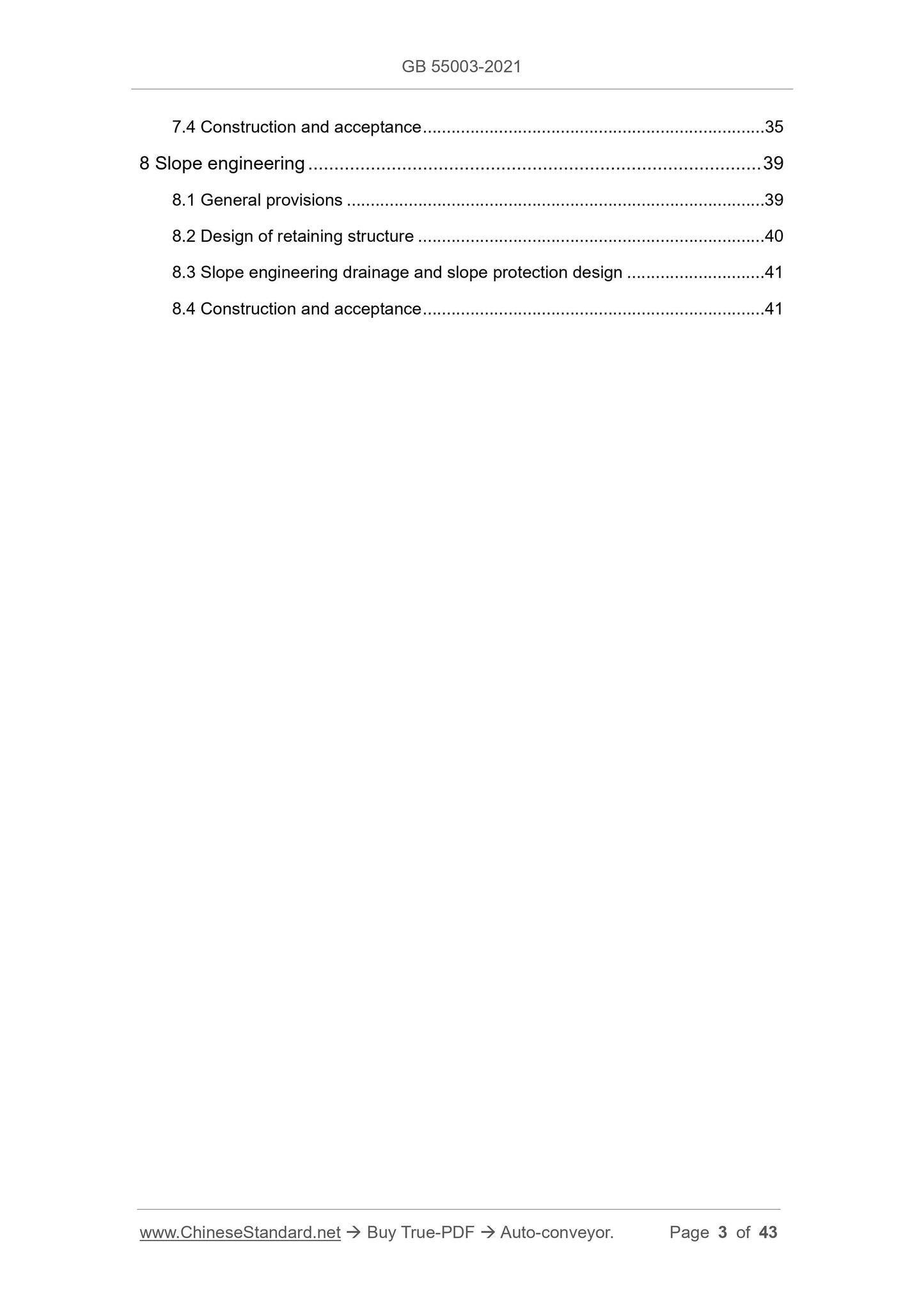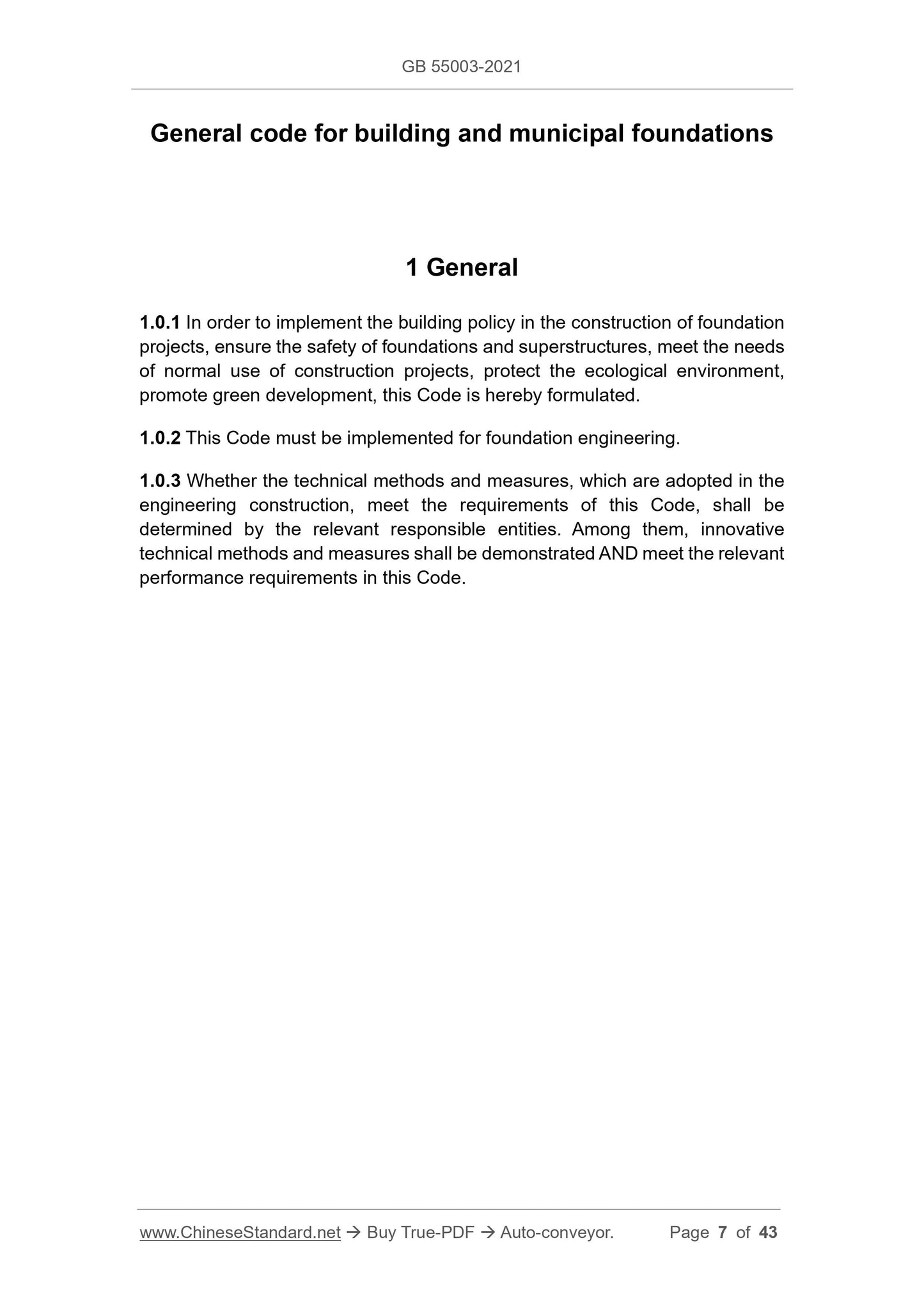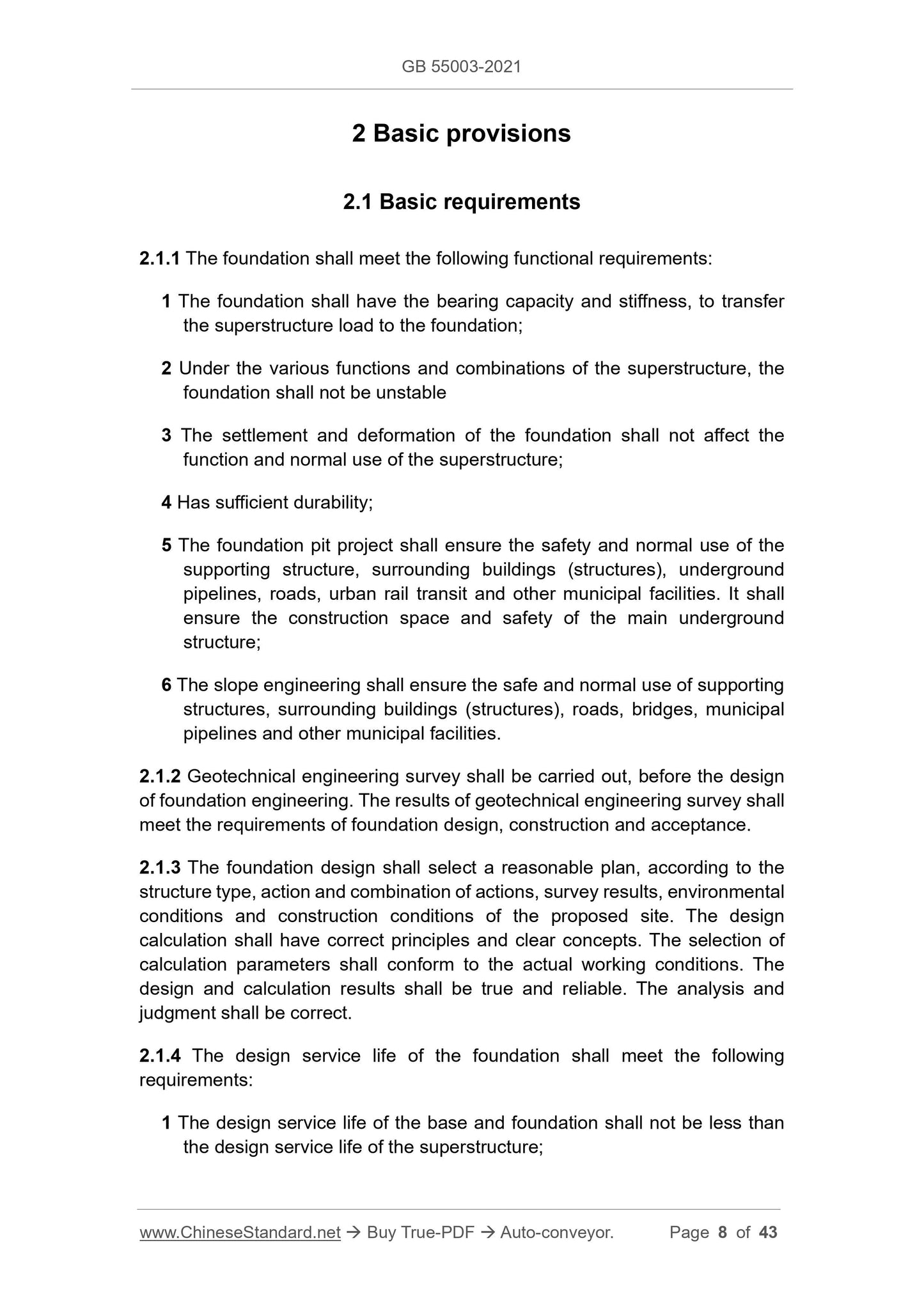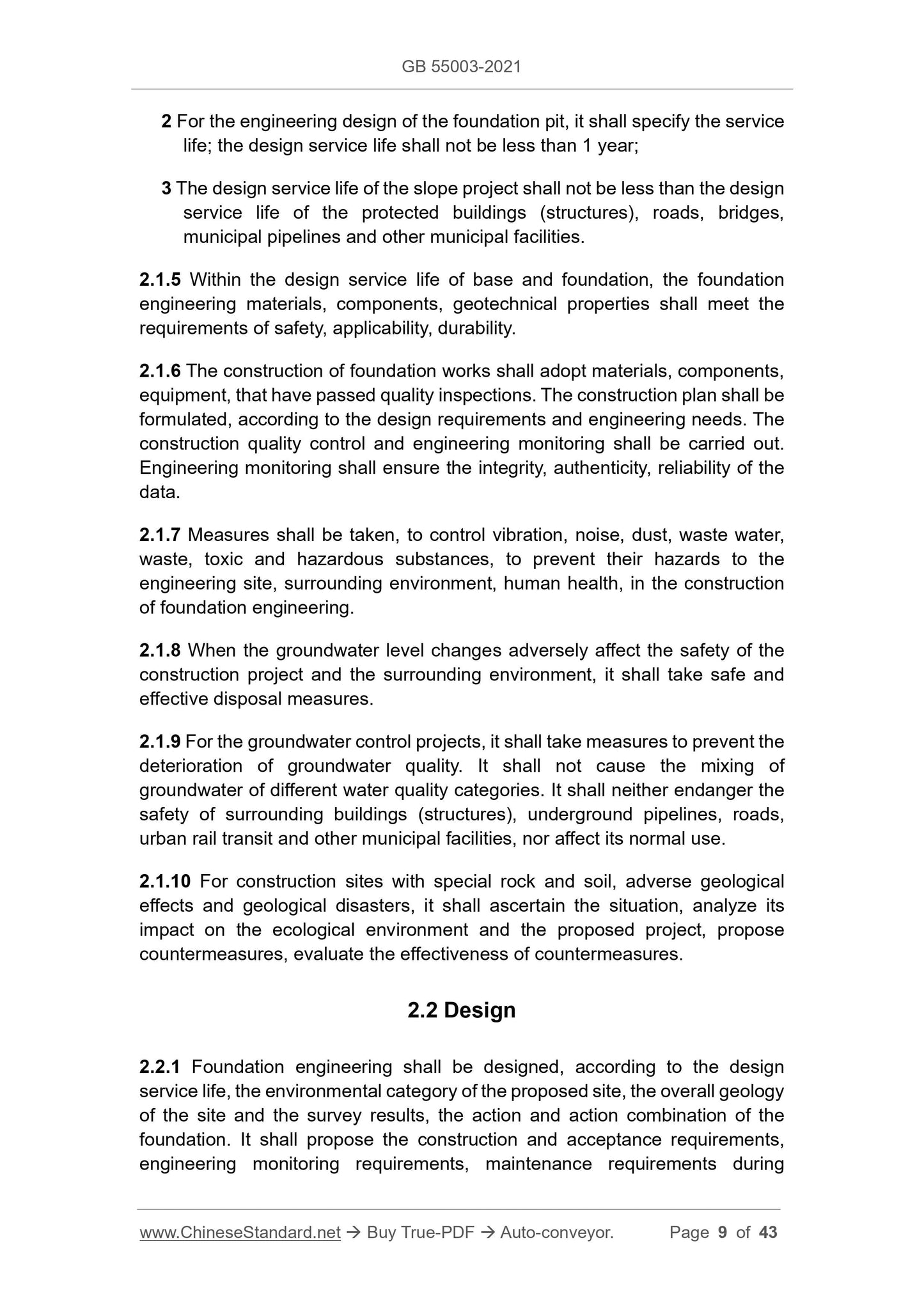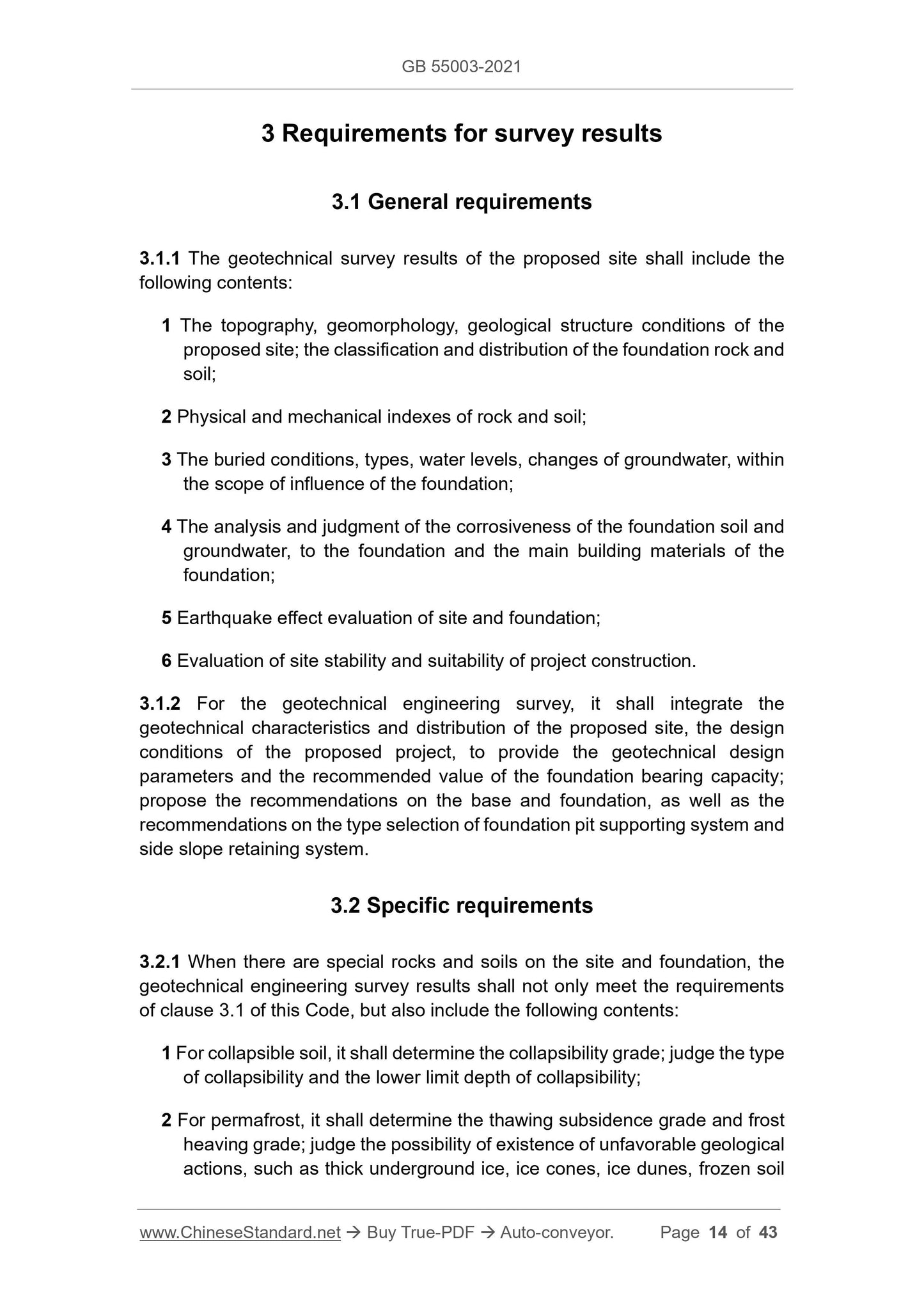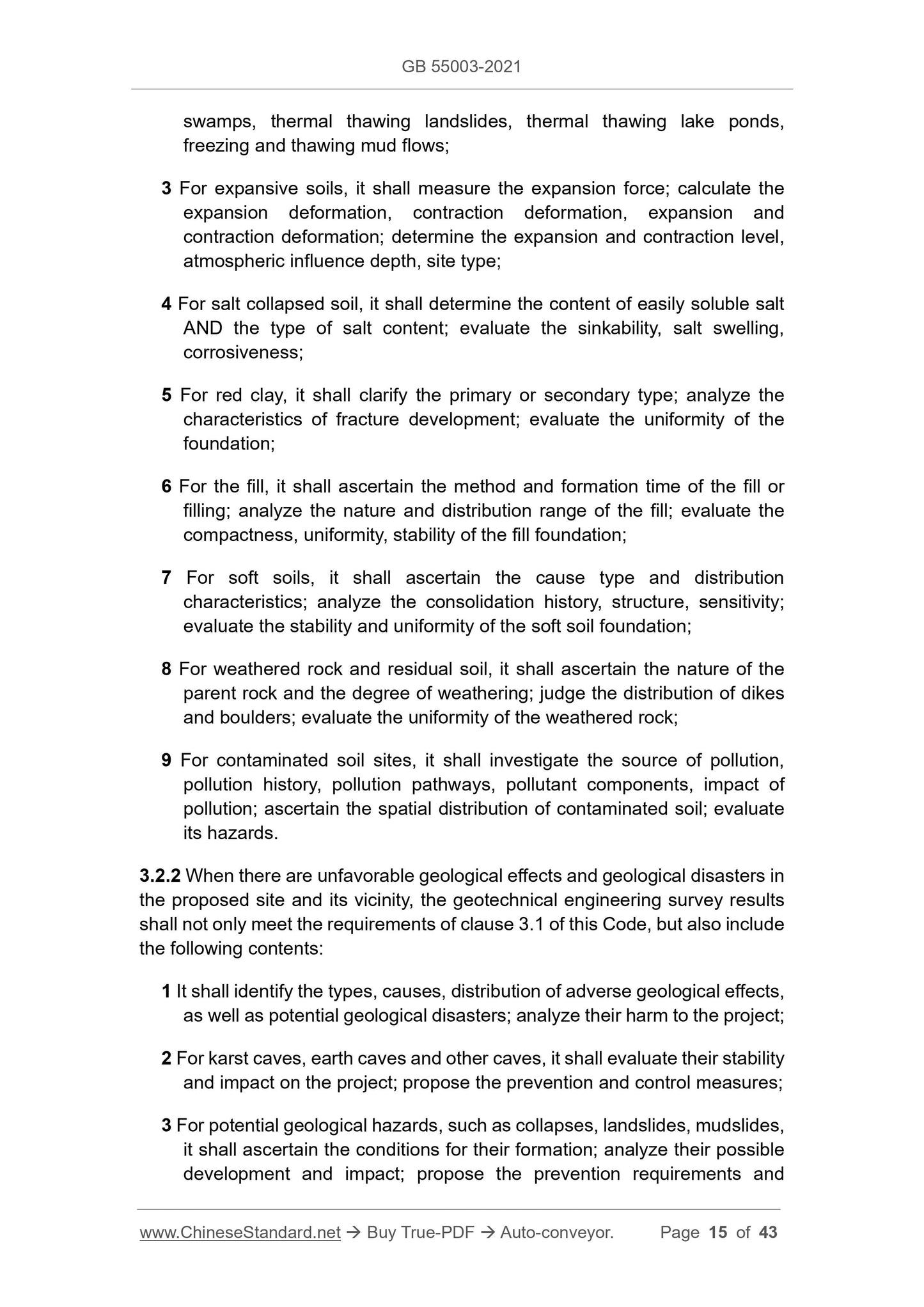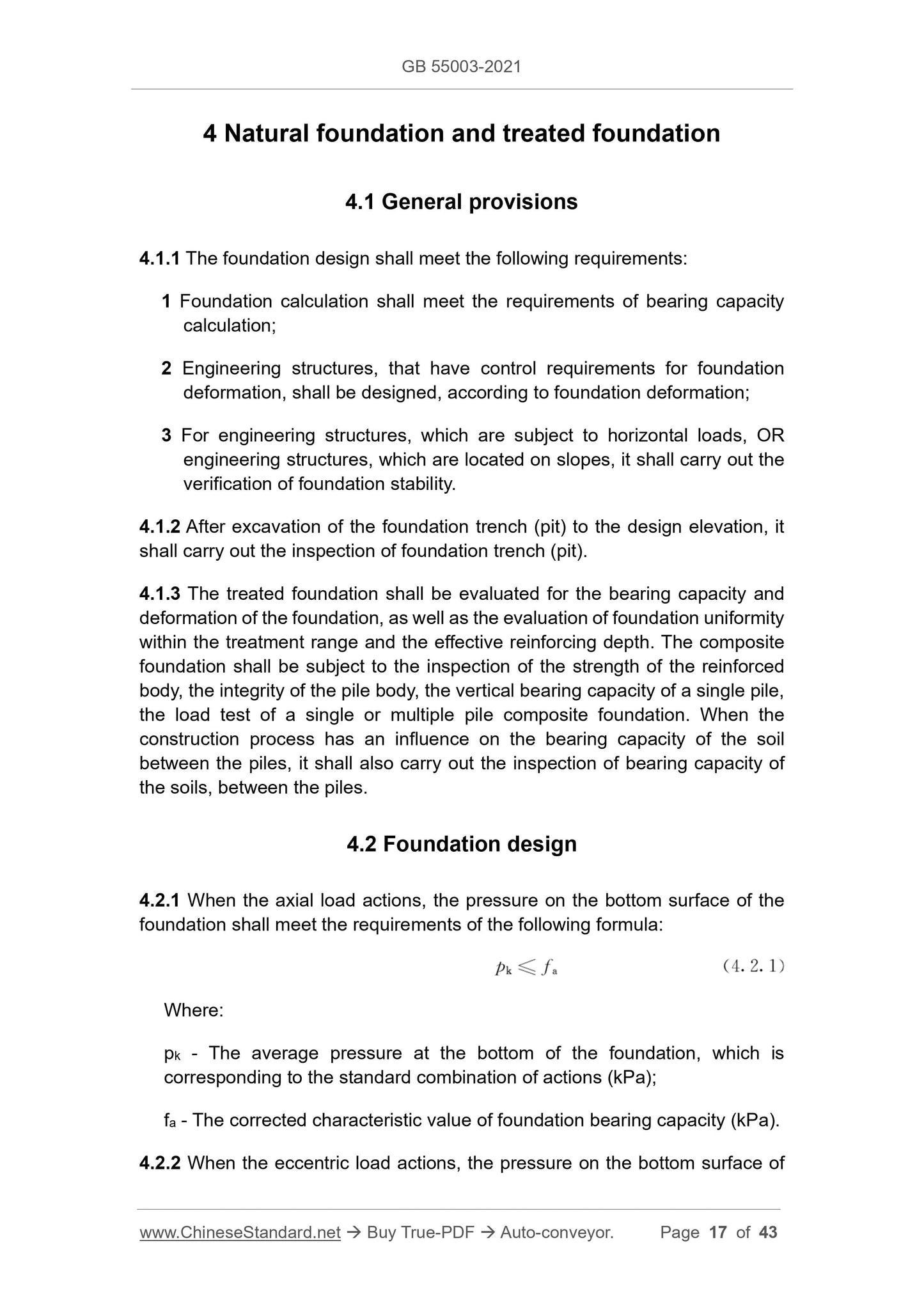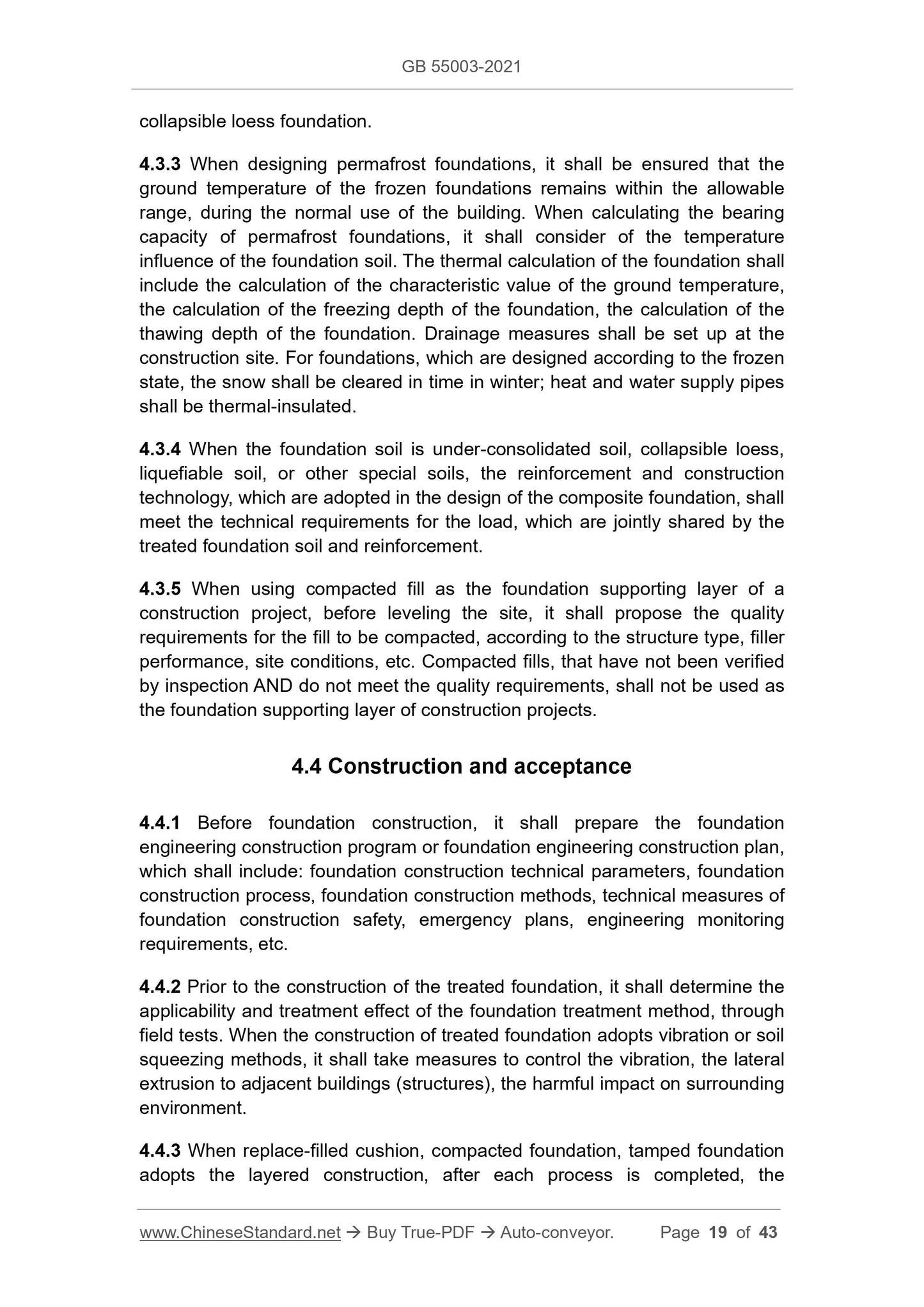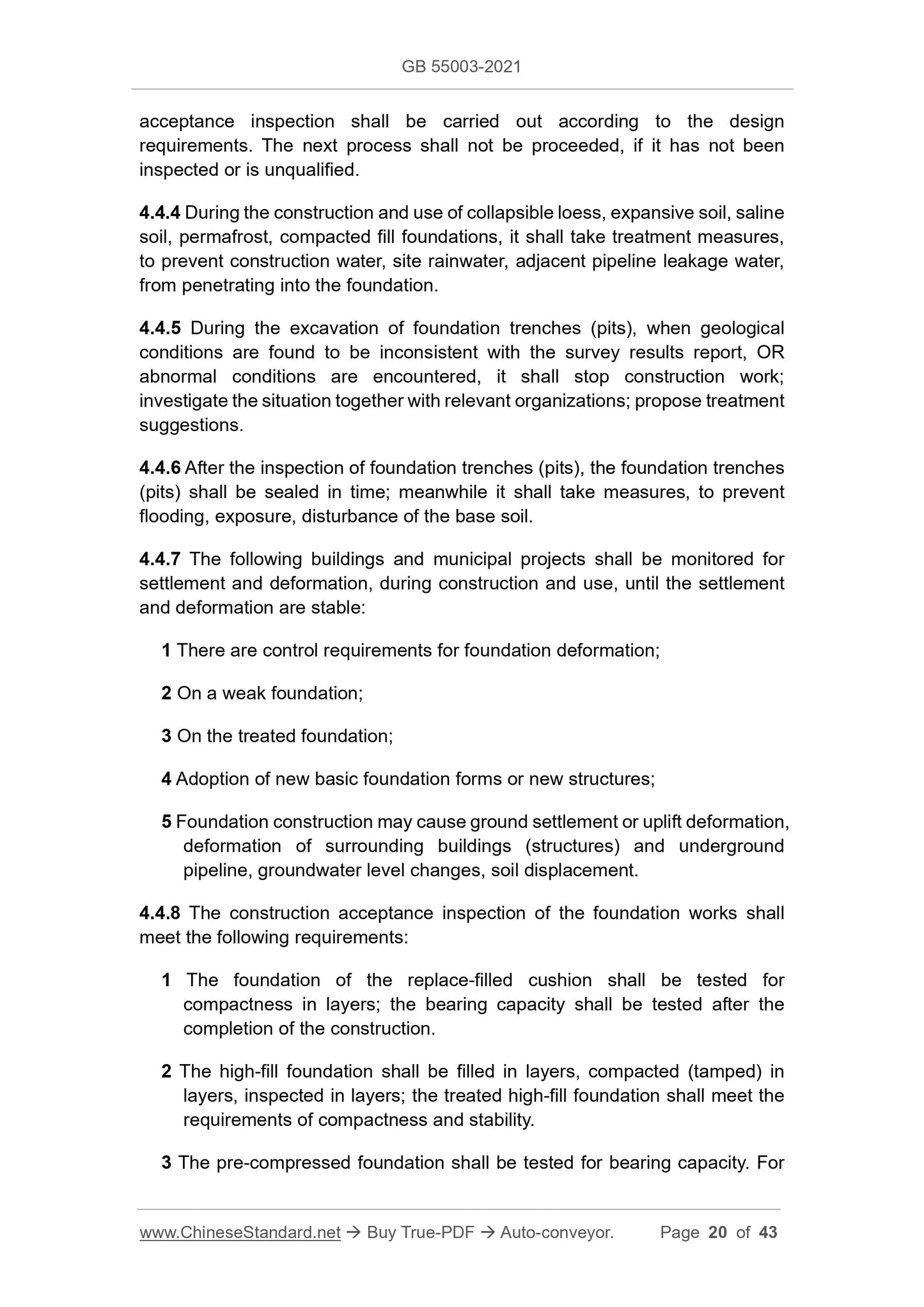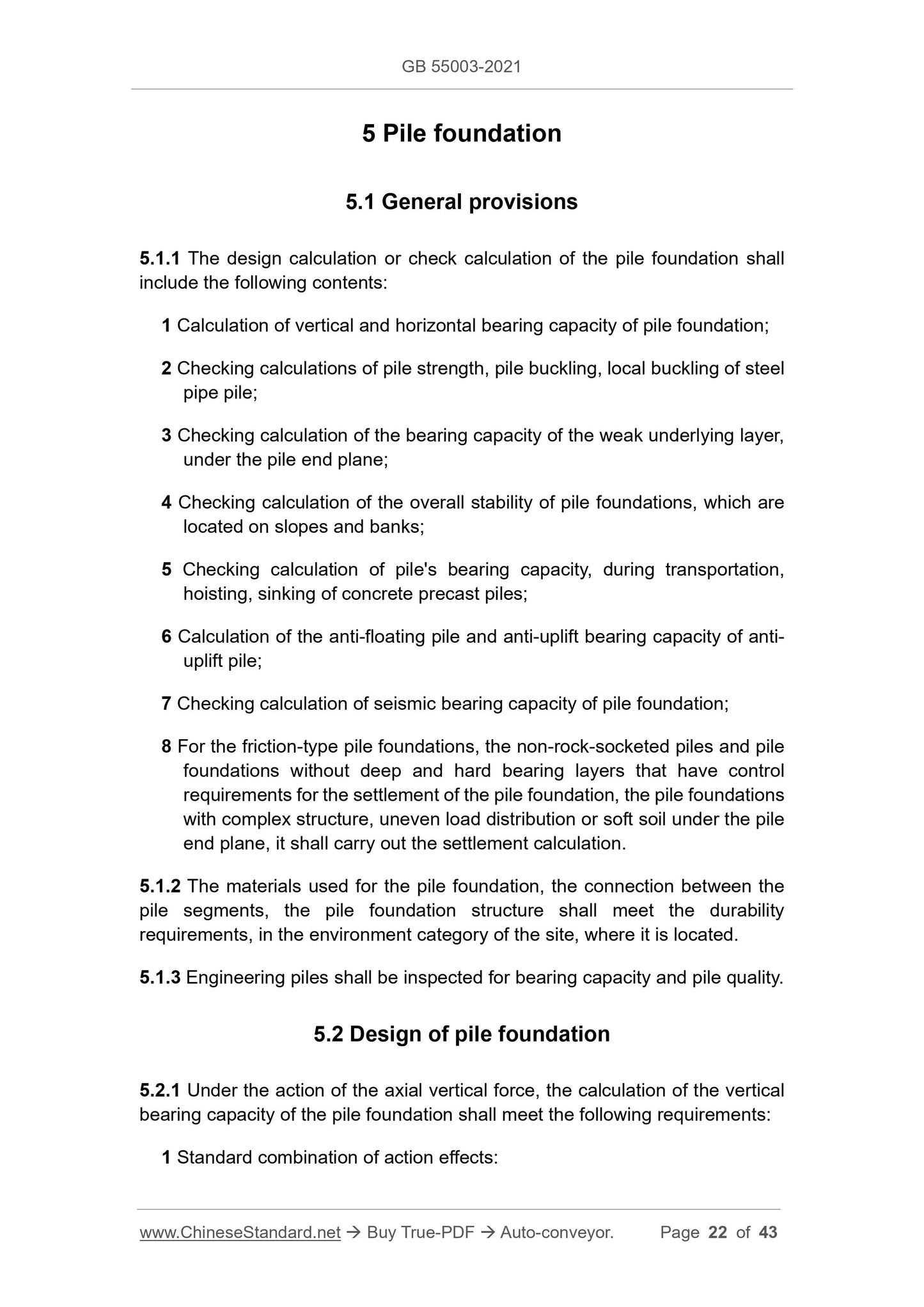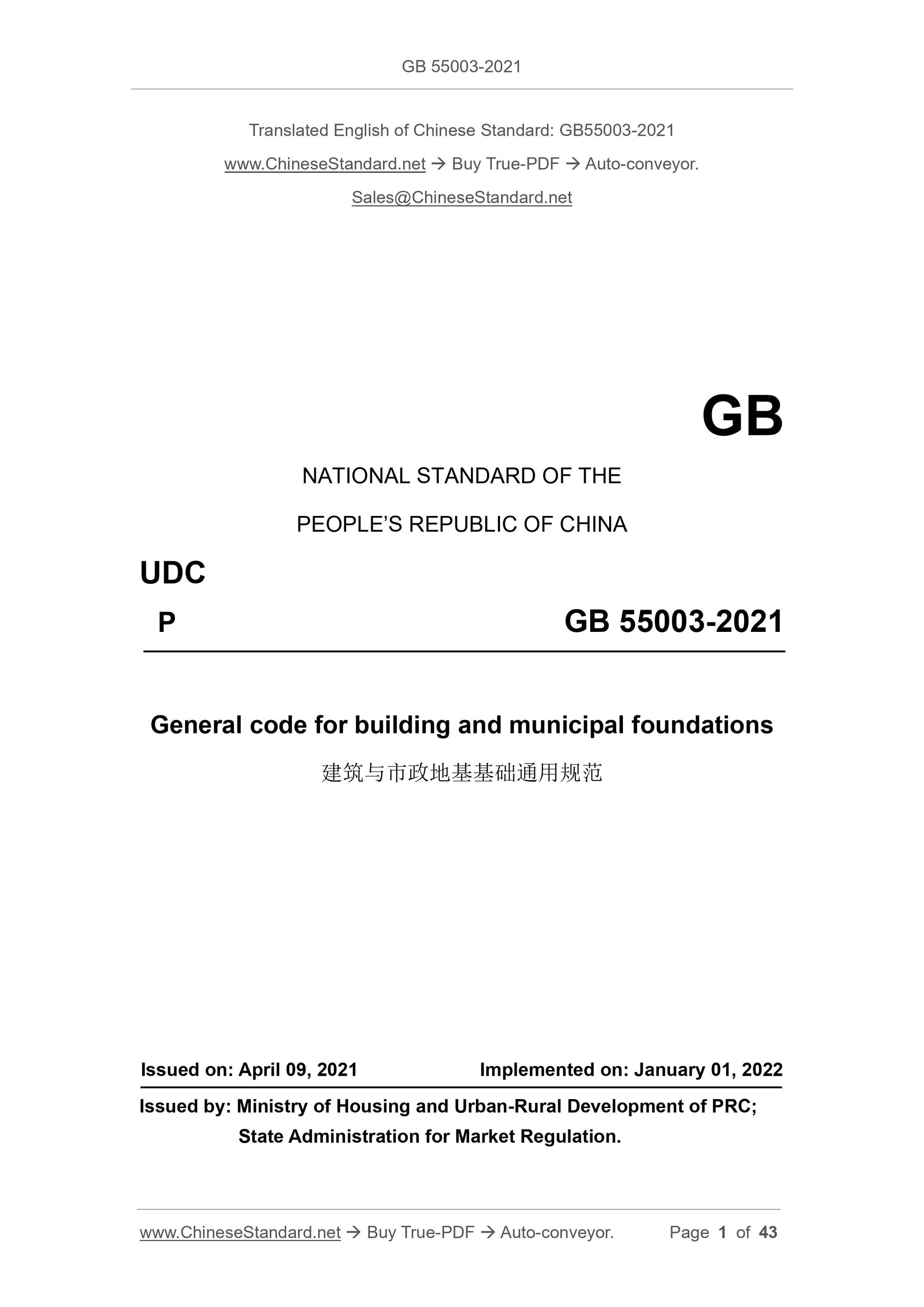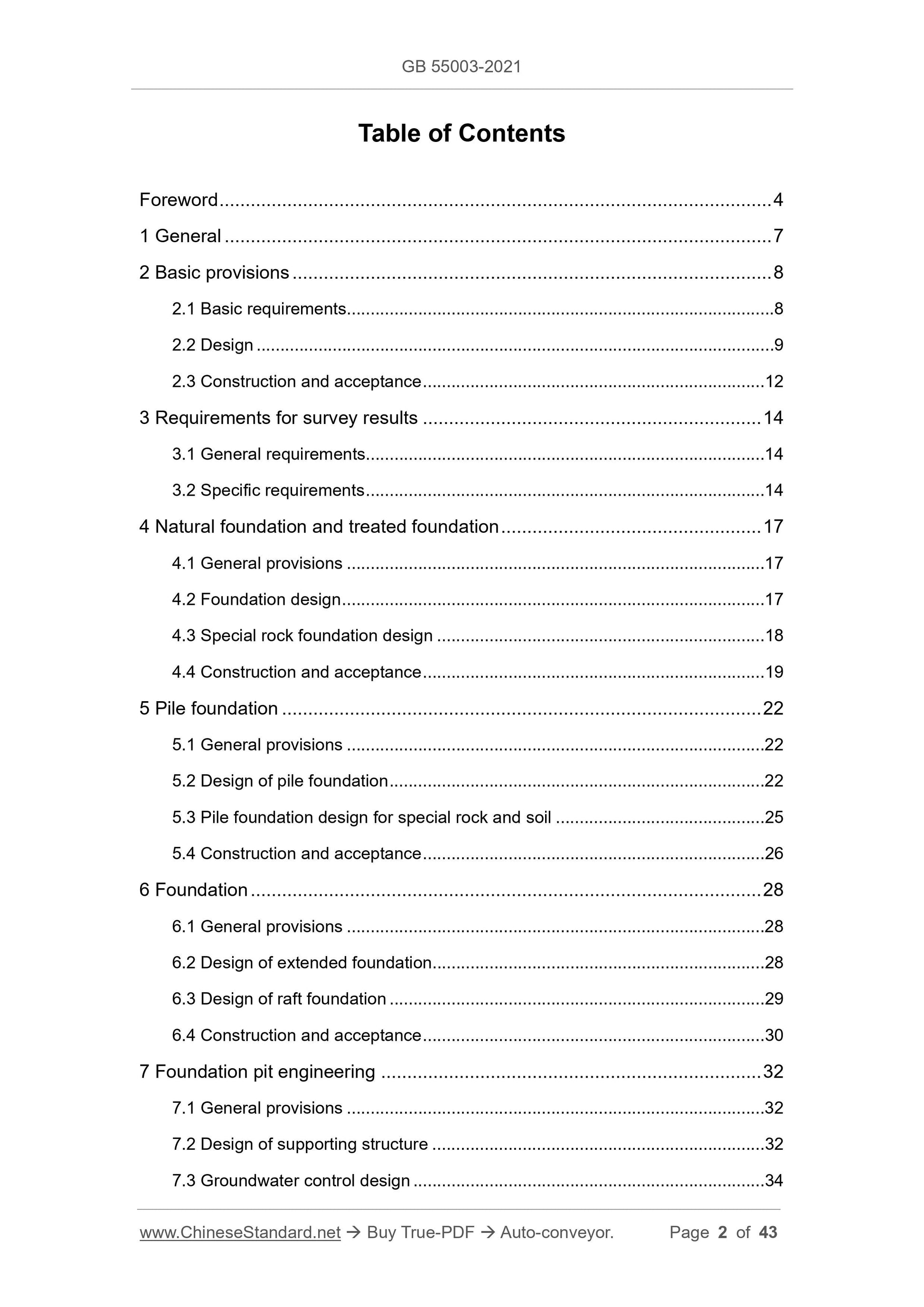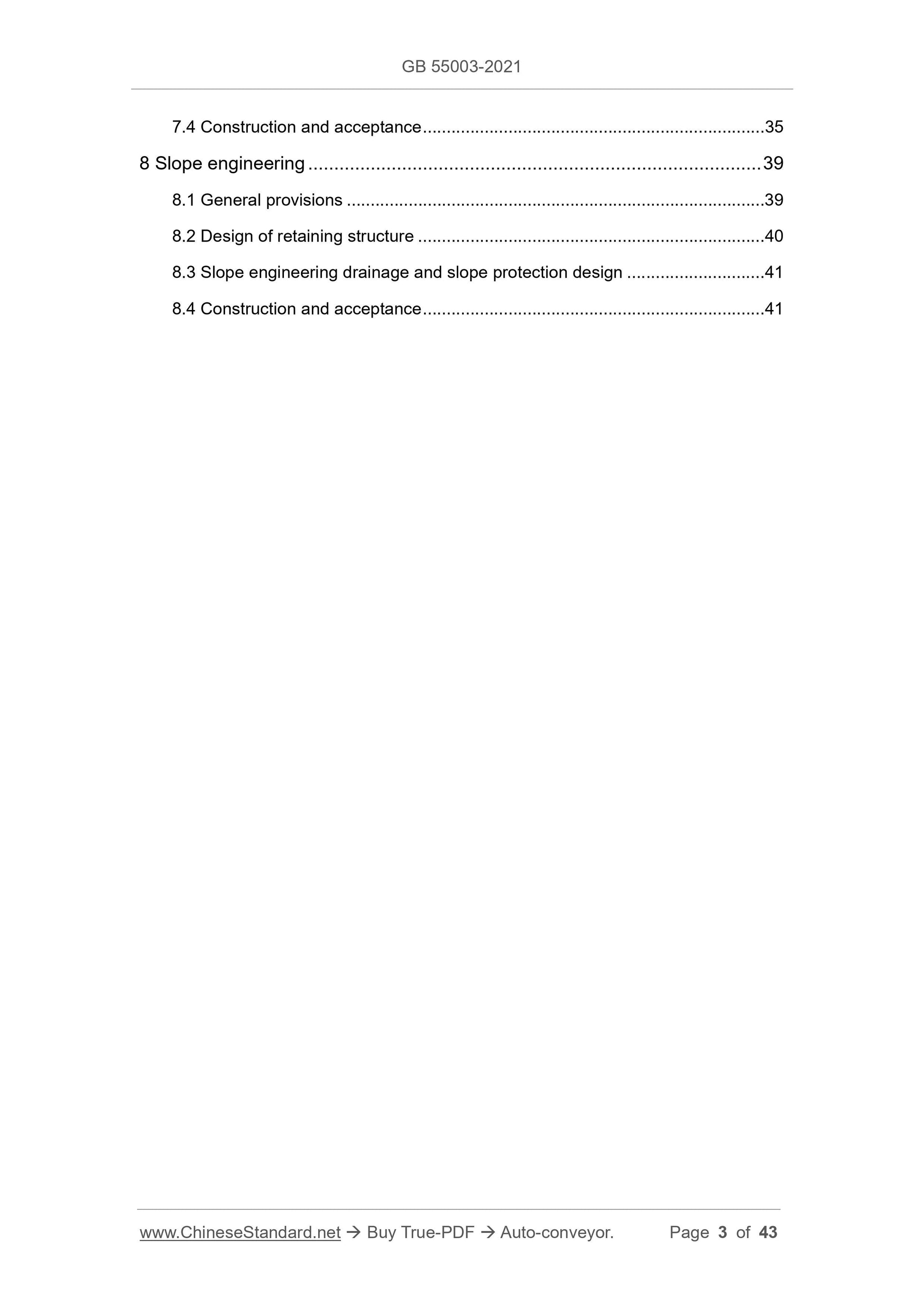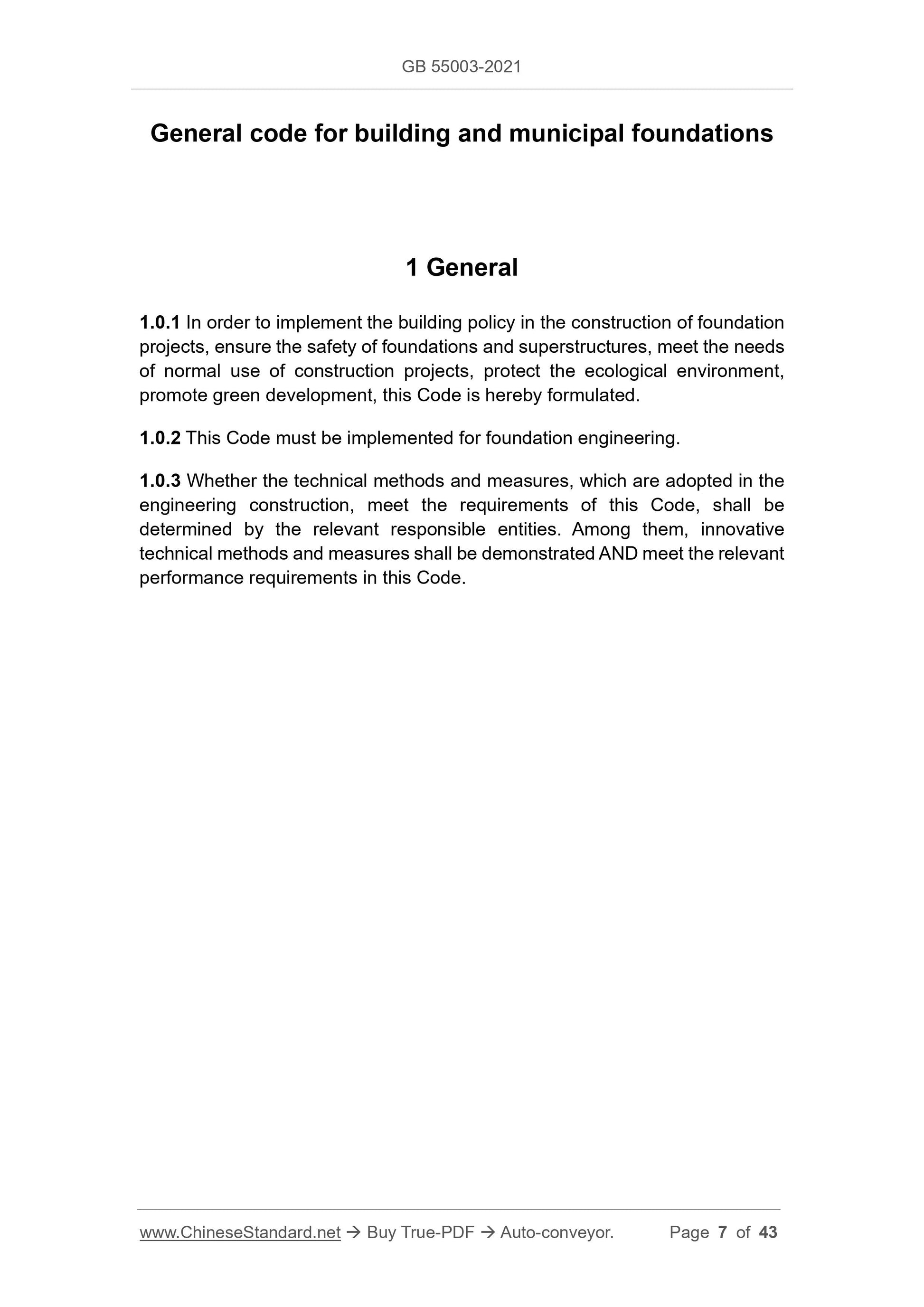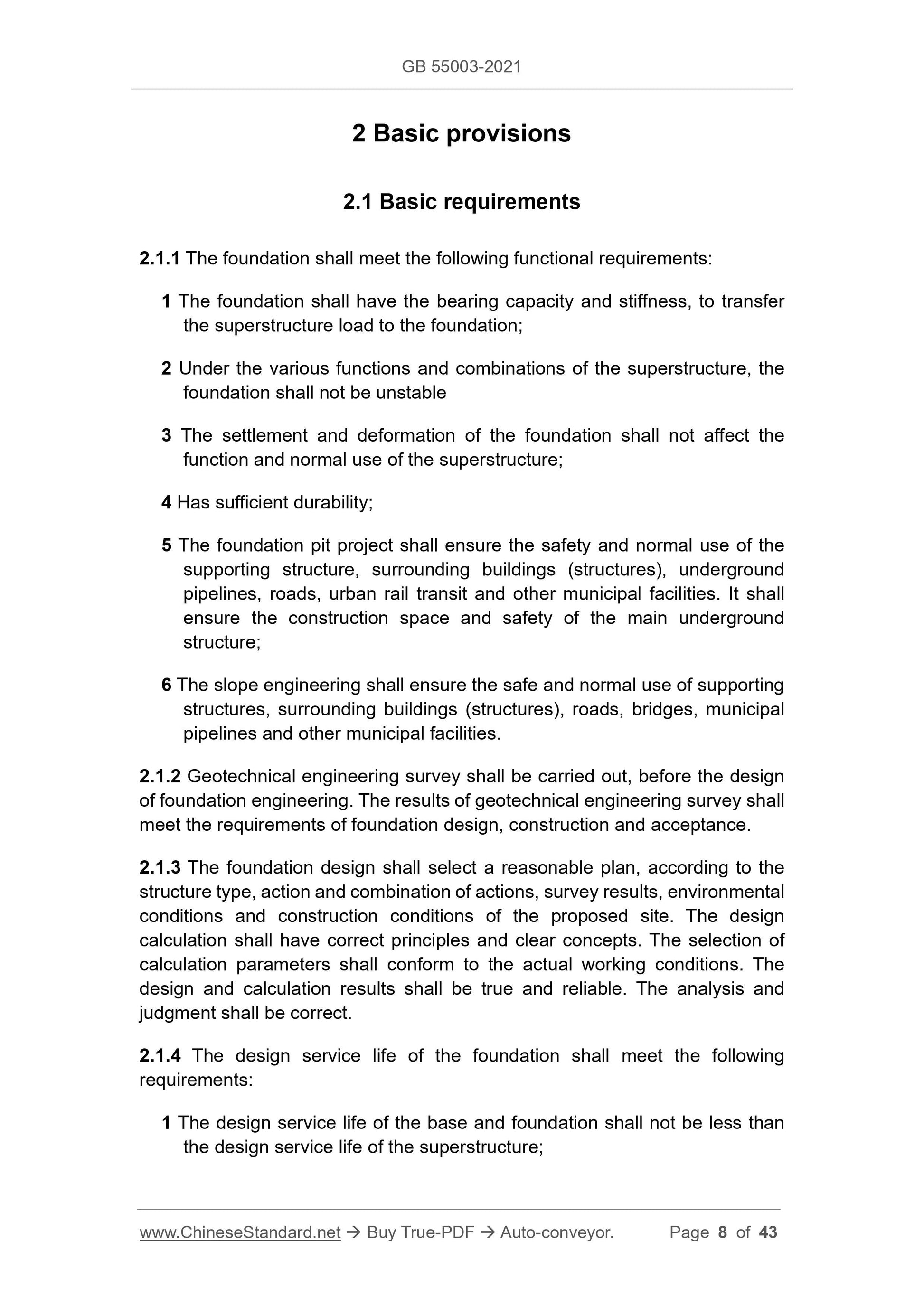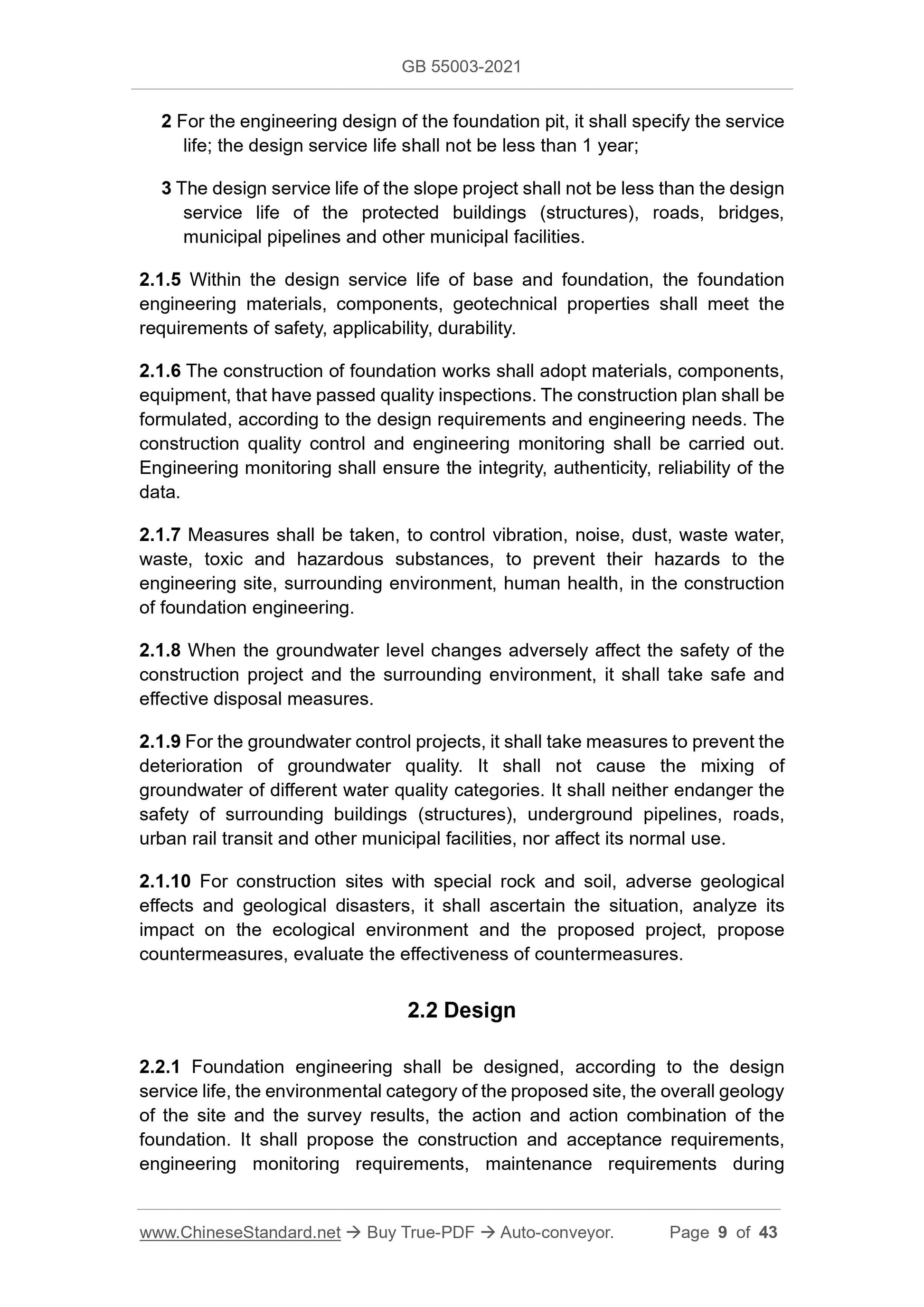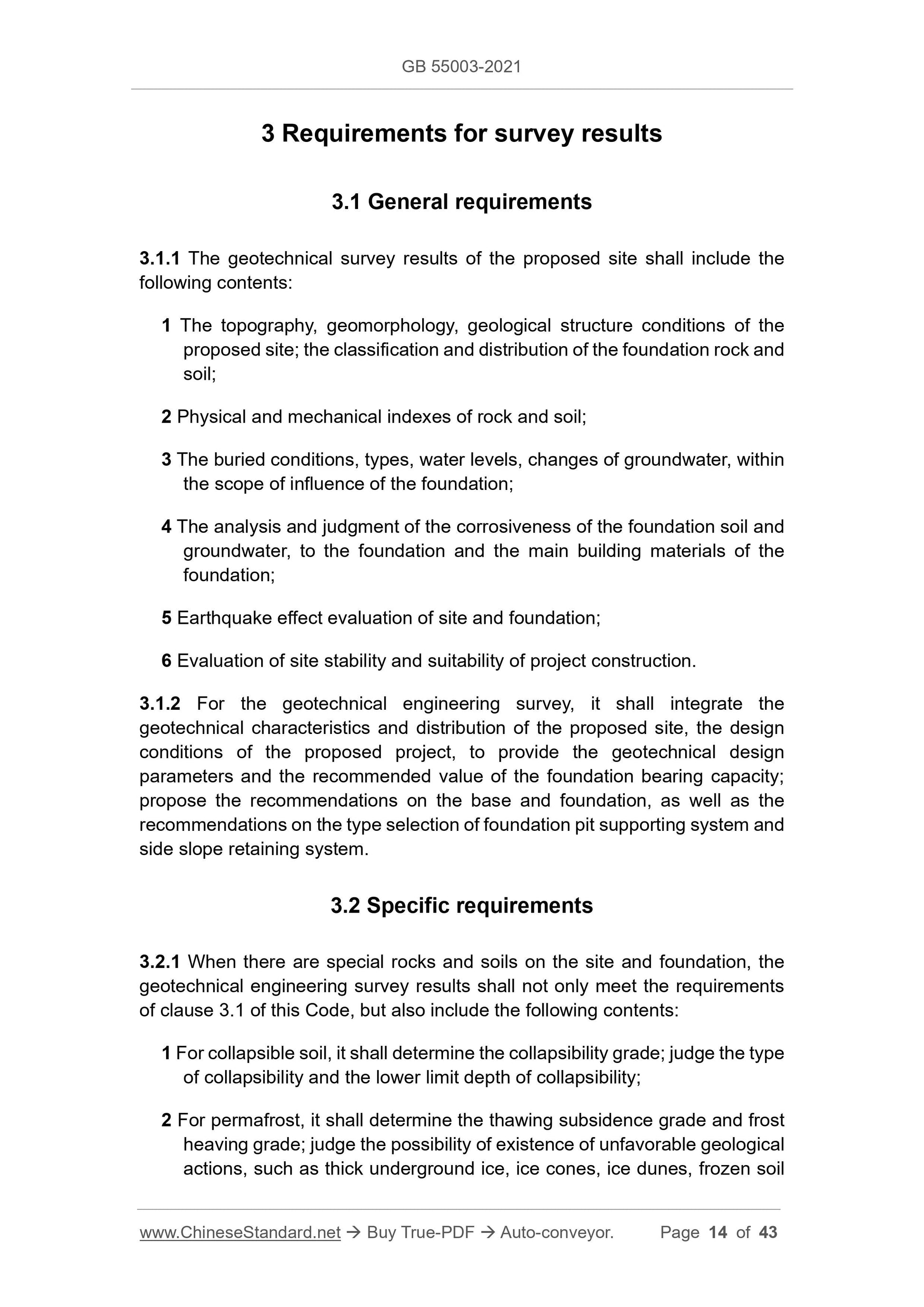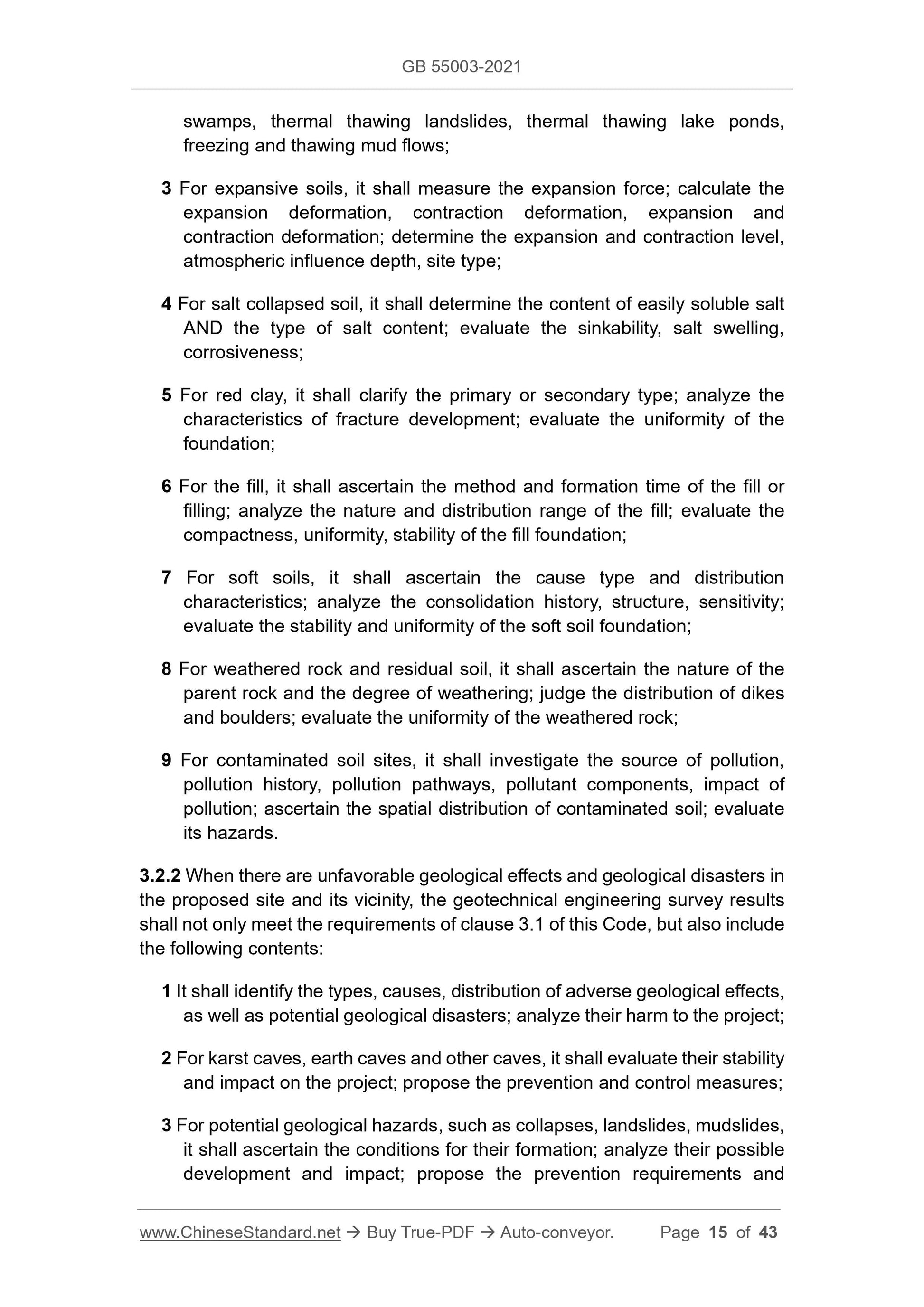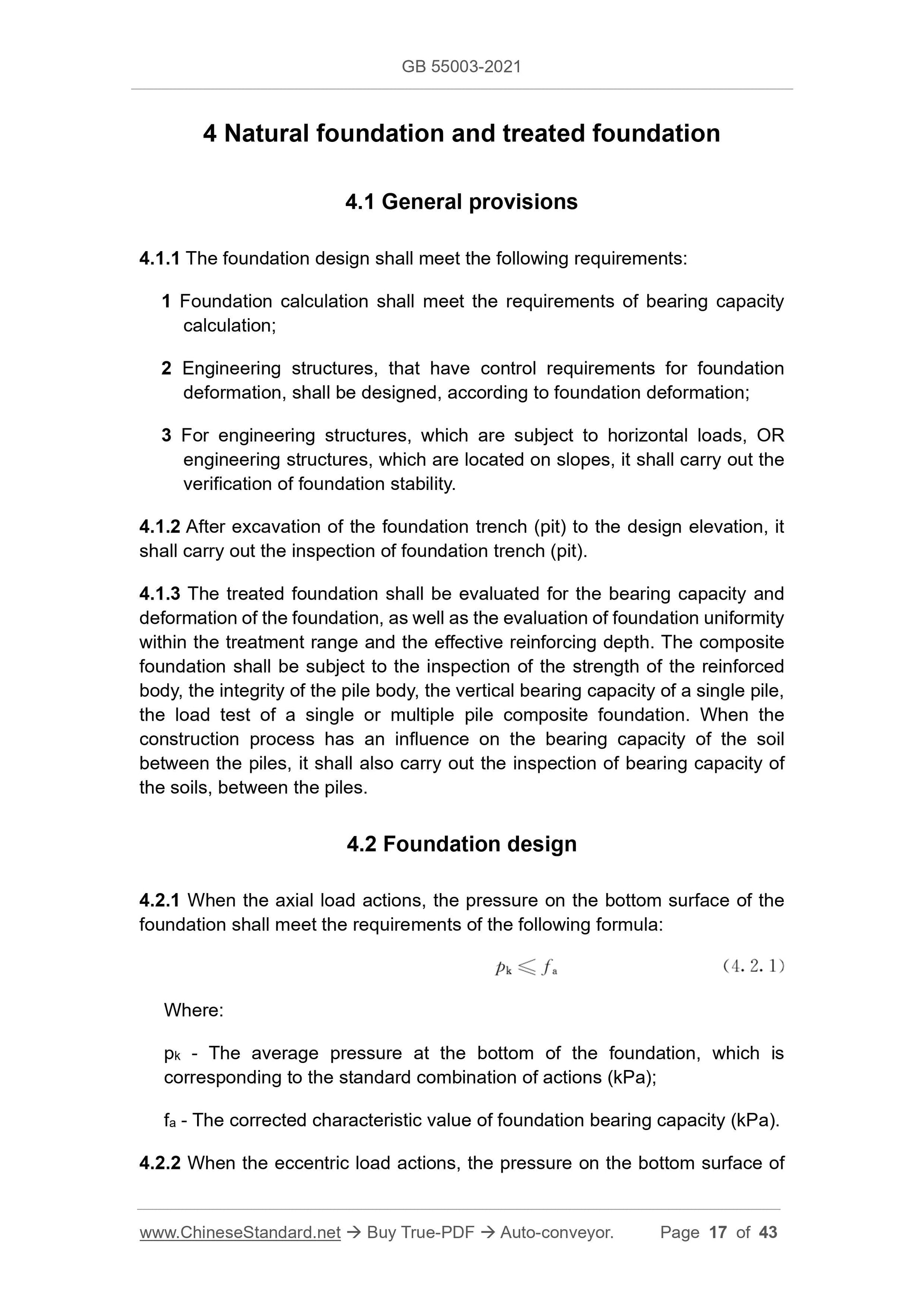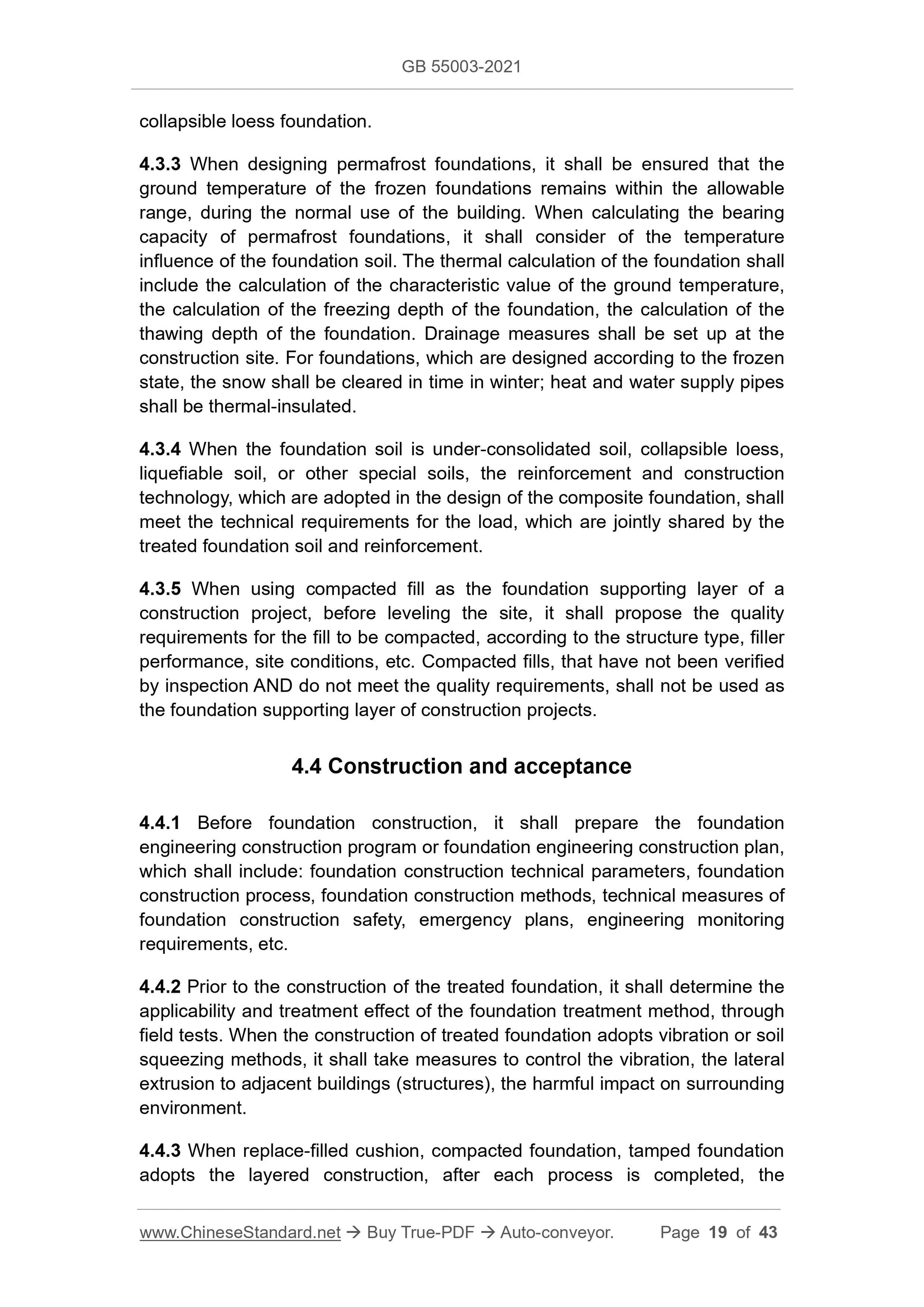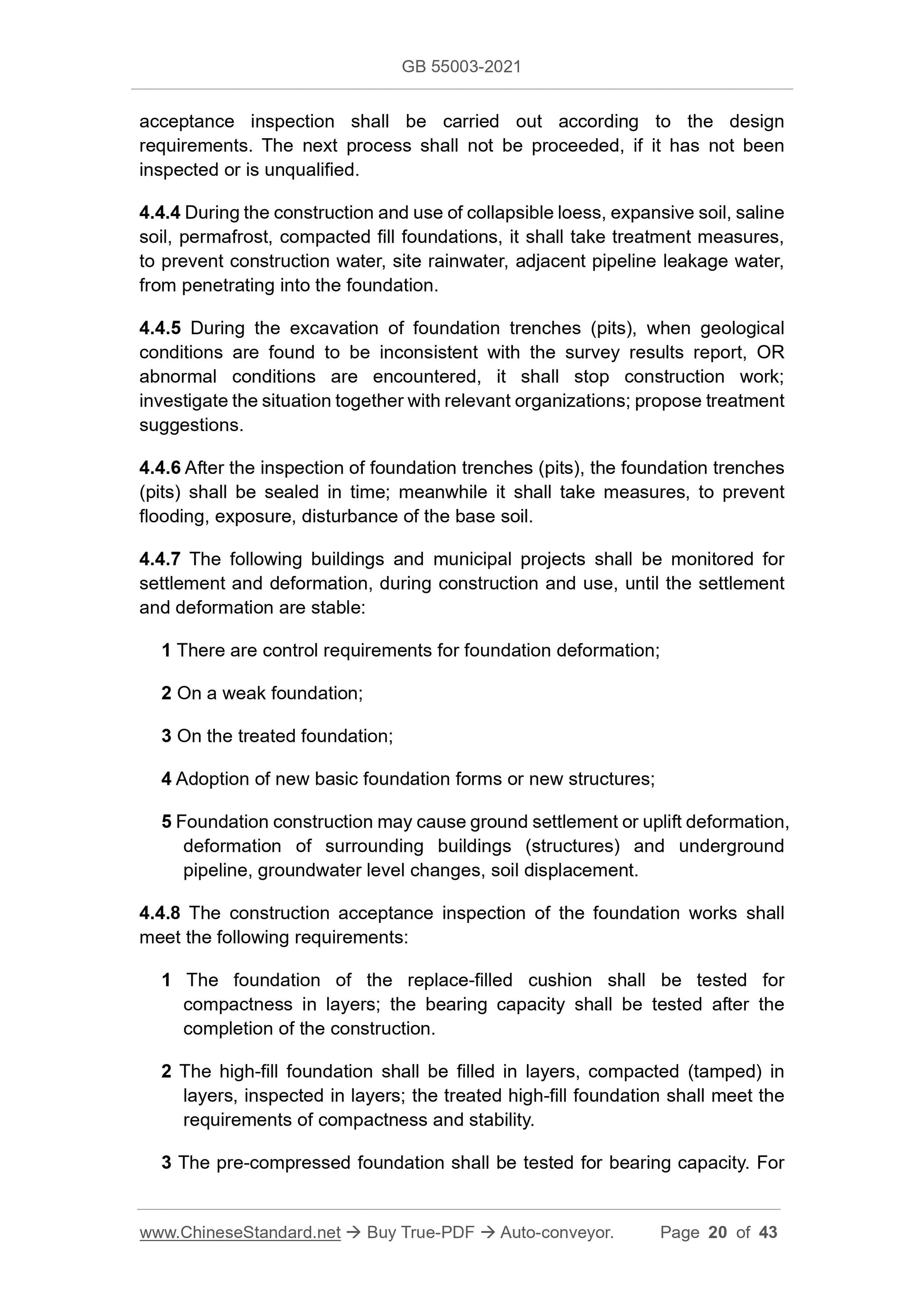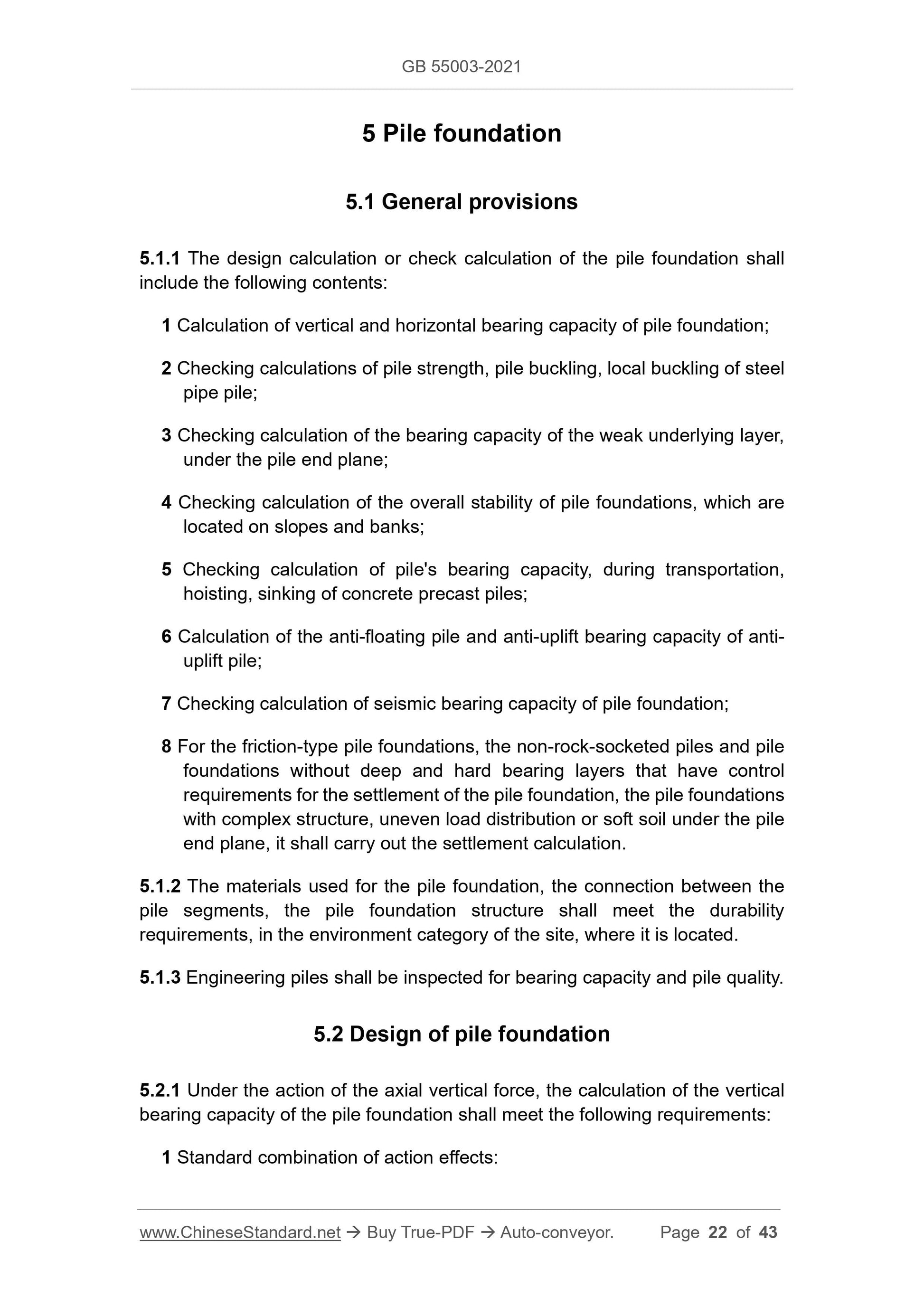1
/
of
12
www.ChineseStandard.us -- Field Test Asia Pte. Ltd.
GB 55003-2021 English PDF
GB 55003-2021 English PDF
Regular price
$500.00
Regular price
Sale price
$500.00
Unit price
/
per
Shipping calculated at checkout.
Couldn't load pickup availability
GB 55003-2021: Code for design of building foundation
Delivery: 9 seconds. Download (and Email) true-PDF + Invoice.Get Quotation: Click GB 55003-2021 (Self-service in 1-minute)
Newer / historical versions: GB 55003-2021
Preview True-PDF
Scope
1.0.1 In order to implement the building policy in the construction of foundationprojects, ensure the safety of foundations and superstructures, meet the needs
of normal use of construction projects, protect the ecological environment,
promote green development, this Code is hereby formulated.
1.0.2 This Code must be implemented for foundation engineering.
1.0.3 Whether the technical methods and measures, which are adopted in the
engineering construction, meet the requirements of this Code, shall be
determined by the relevant responsible entities. Among them, innovative
technical methods and measures shall be demonstrated AND meet the relevant
performance requirements in this Code.
Basic Data
| Standard ID | GB 55003-2021 (GB55003-2021) |
| Description (Translated English) | Code for design of building foundation |
| Sector / Industry | National Standard |
| Classification of Chinese Standard | P23 |
| Word Count Estimation | 36,364 |
| Issuing agency(ies) | Ministry of Housing and Urban-Rural Development of the People's Republic of China; State Administration for Market Regulation |
Share
